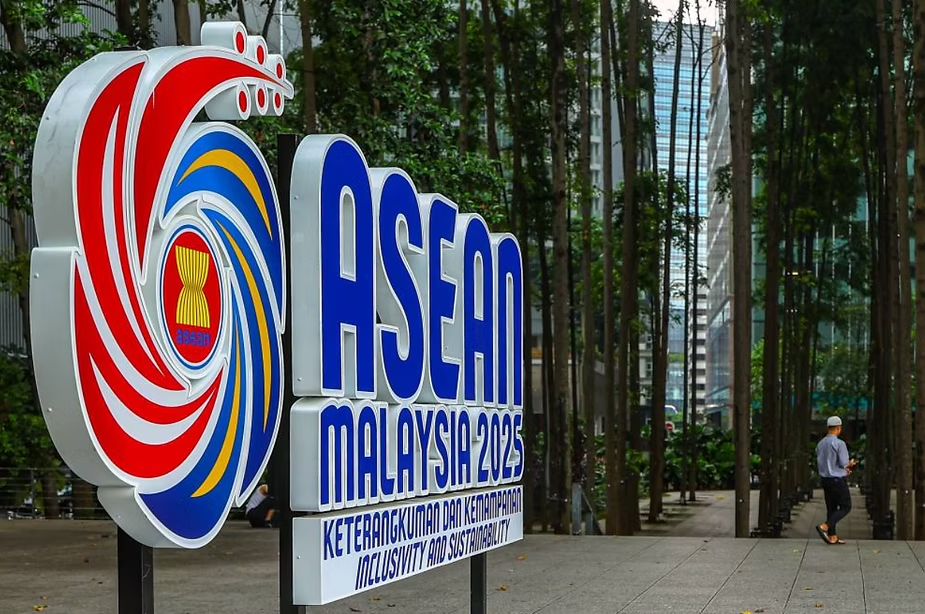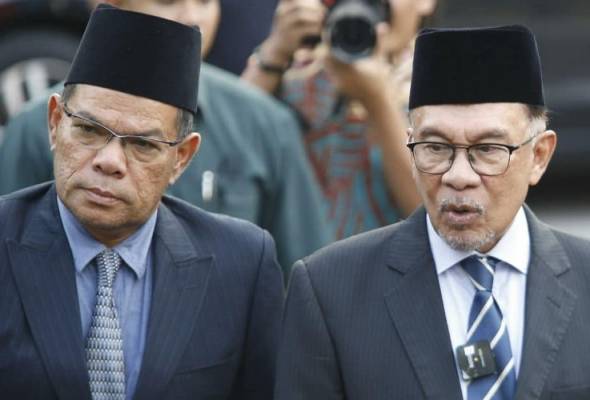How Malaysia & ASEAN Can Turn a Tariff Crisis into a $Trillion Geo-economic pivot by launching a US$ stablecoin under the Genius Act.
When the United States passed the GENIUS Act earlier this month — with bipartisan support and President Trump’s signature — most world governments and media outlets either missed its global implications or dismissed it as a niche finance bill. WAKE UP folks! The GENIUS Act has opened a rare geopolitical and financial portal.
The United States slapped a 25% tariff on Malaysian exports just weeks ago, citing Malaysia’s New Economic Policy and its unyielding Bumiputra-first stance, as unacceptable trade barriers. The message was blunt: comply or pay. But, rather than retreat, Malaysia has a once-in-a-generation opportunity to rewrite the rules of engagement — not just with the United States, but with the entire global financial order.
The GENIUS Act allows foreign governments, regulated institutions, or even central banks to issue USD-backed stablecoins — under a reciprocal framework — without falling afoul of U.S. financial prohibitions. For nations that move quickly, this opens an unprecedented opportunity: to become regional or even global nodes in a new digital dollar infrastructure, attracting capital, boosting trade, and hedging against global volatility.
This could be Malaysia’s moment. Malaysia, now chairing ASEAN in 2025, is in a unique position to seize this moment — and to use it to reset its trade relationship with the United States. Malaysia has the regulatory capability, fintech infrastructure and geopolitical positioning to lead in ASEAN stablecoin innovation. Implementing a USD-pegged ASEAN stablecoin under the Genius Act isn’t just a financial instrument—it’s a sovereign statement, a strategic tool and a path to long-term fiscal strength. The question that remains is: does it have the deal making savvy?!

Will ASEAN seize the opportunity?
The window will not remain open for long.
The ASEAN Opportunity: United We Tokenize.
Thd Genius Act invites regulated market players to join a dollar-pegged ecosystem with transparency and optionality — not coercion.
Chair of ASEAN isn’t just ceremonial — it’s strategic. If Malaysia were to launch a sovereign U.S. dollar stablecoin initiative through a GLC, a central bank-linked SPV or a licensed consortium, and then successfully persuade the other nine ASEAN nations to join in, the results would be historic. Malaysia could, potentially, turn a tariff crisis into a $1 trillion Geo-economic pivot.
Imagine this:
- Each ASEAN member agrees to invest an initial US$50 billion into Malaysia’s USD stablecoin framework, with a commitment to double that within three years.
- That’s US$500 billion now, and another US$500 billion soon — all settled in U.S. dollars, held in U.S.-based banks operating inside Malaysia (e.g., Citi, JPMorgan, BofA).
- These reserves are fully backed. Coins are only minted once the funds are received, maintaining a 1:1 ratio — the same model Circle uses for USDC.
This means Malaysia wouldn’t need to rely on its existing foreign reserves (currently US$120 billion). Instead, it would create new reserves through actual dollar inflows. In effect, the system scales with demand — instantly and transparently. And the U.S. — already thrilled about Japan’s $500 billion investment promise over multiple years; would now face a unified ASEAN offering double that amount almost overnight.
Would Holding Reserves in U.S. Banks Count as a U.S. Investment?
Yes — at least economically and politically.
If Malaysia-led ASEAN stablecoin issuers park $500 billion worth of reserves in U.S. financial institutions, this would be seen as:
- Capital inflow into the U.S. financial system;
- Deepening liquidity for U.S. Treasuries or dollar-based assets;
- A vote of confidence in the U.S. dollar system — exactly what Trump and the GENIUS Act are designed to encourage.
While not direct FDI (e.g., factories), it is portfolio investment, and can be seen as financial infrastructure support.
Just like Japan’s $500B package was framed to secure its 15% tariff rate, ASEAN’s pooled participation in the Malaysian stablecoin could be framed as:
ASEAN’s strategic economic support for the U.S. dollarized ecosystem.
Turning Tariffs into a Trade-Off
Here’s where the magic happens. If Malaysia can pull together this coalition and present it to the Trump administration as a bloc-wide commitment to strengthen U.S. dollar liquidity, support U.S. debt markets (via stablecoin reserves), and establish transparent, blockchain-based monetary flows — it will become geopolitically invaluable.
And then it can ask:
“Mr. President, you have Japan at 15% tariffs. Why not ASEAN too?”
Trump is a deal-maker. ASEAN offering $1 trillion in stable, dollar-pegged capital flows into U.S. institutions would be the kind of leverage that gets things done — not just for Malaysia, but for Vietnam, Indonesia, Thailand, and the rest of the bloc.
Tariffs aren’t about punishment; they’re about leverage. This is Malaysia creating a counter-leverage.
Why the U.S. Would Say “Yes”!
Despite China’s influence over BRICS and the recent de-dollarization hype, America still wants one thing: dollar demand. With the Federal Reserve balance sheet strained, and China dumping U.S. Treasuries at pace, Trump needs a new mechanism to soak up dollars and support Treasury issuance.
The GENIUS Act is that mechanism. It creates the “rails” for new, private-sector issued dollar instruments that can flow globally without the Fed printing more. It also decentralizes the custodial risk: dollar reserves can sit outside New York, but inside U.S. banks globally.
And Malaysia’s plan offers:
- Dollar demand without printing more dollars.
- Regional digital financial innovation without competing with U.S. interests.
- A strong counter to BRICS without confrontation.
ASEAN becomes a dollar-supporting bloc by design, not decree. And the U.S. gets stablecoin-fueled stability — with none of the CBDC controversy.
Could Ripple Be a Partner?
Yes — if Malaysia wants to move fast, it could partner with a U.S.-regulated issuer like Ripple, which has already announced its own USD stablecoin initiative. By collaborating with Ripple or similar players, Malaysia can:
- Skip the tech build and focus on regulation, distribution, and reserves.
- Leverage Ripple’s U.S. compliance infrastructure to fast-track GENIUS Act alignment.
- Set up joint custodial arrangements inside Malaysia with U.S. licensed banks.
This would still leave control over the issuance and reserves in Malaysian hands, while also reinforcing GENIUS Act reciprocity — a win-win setup.
Why China, India & Others Might Invest
Despite holding large forex reserves themselves, many Asian economies are seeking diversification away from U.S. political risk. Investing in a Malaysia-led stablecoin gives them:
- Exposure to U.S. dollars with ASEAN custodial safety.
- Blockchain-based transparency and real-time settlement.
- An alternative to Fed- or China-controlled rails.
Even China, if it sees this as a neutral zone, might participate — not to support the dollar, but to gain access to capital markets indirectly, especially amid sanctions and restrictions.
Can Malaysia Hold the Line?
Skeptics will ask: does this threaten the ringgit?
No. Malaysia can adopt a dual-token system, where the ringgit remains legal tender and central to domestic transactions, while the dollar stablecoin is used for trade, investment, and cross-border settlements. Similar to how Hong Kong maintains the HKD alongside USD usage.
Others will ask: can these reserve funds be sanctioned?
Only if Malaysia foolishly stores reserves solely in New York. By using U.S.-licensed banks operating in Malaysia as custodians (e.g., Citibank), the system achieves reciprocity while retaining partial sovereign control. If the U.S. moves to freeze assets, it would signal a breach of its own GENIUS Act — a self-defeating move.
The Bigger Picture
With the GENIUS Act, Trump has created the blueprint to sidestep CBDCs while still preserving dollar hegemony. For Malaysia, this is a once-in-a-lifetime chance to lead ASEAN into a new monetary era, one where the bloc isn’t bullied by Beijing or boxed in by Brussels.
And with $1 trillion in digital-dollar reserves, Malaysia won’t just be Chair of ASEAN.
It’ll be architect of the new Asian financial frontier.
Strategic Upshot
If executed well, Malaysia could:
- Become a new digital reserve center for ASEAN and beyond.
- Transform its economic soft power without printing more Ringgit.
- Offer access to dollar liquidity outside traditional U.S.-controlled monetary tools (Fed, SWIFT, IMF).
- Increase its influence over interest rates for regional development loans.
- Use this influence to negotiate trade deals, including tariff reductions, investment treaties, and joint infrastructure projects.
Final Word: From Tariffs to Triumph
Malaysia’s economic policy is non-negotiable. But, instead of fighting over a 25% tariff, Malaysia can write a new chapter in digital finance and bring ASEAN with it. By framing this stablecoin initiative as an investment into the U.S. financial system via the GENIUS Act, it transforms from a workaround to a win-win diplomatic pivot.
And when the deal is done, and tariffs are restructured, you’ll see ASEAN leaders queuing up not to protest — but to thank Malaysia for leading them into a trillion-dollar future.





